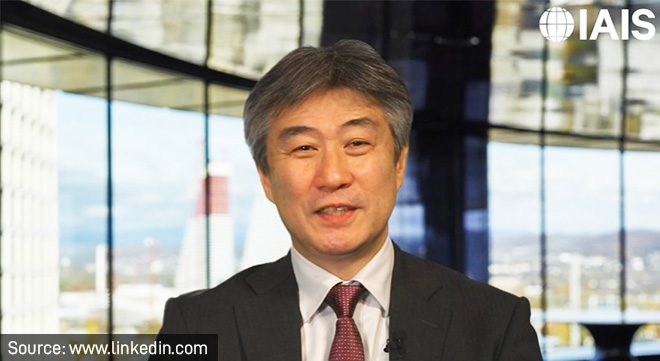After 11 years in the making, the International Association of Insurance Supervisors (IAIS) last week announced the adoption of the Insurance Capital Standard (ICS) “as a prescribed capital requirement for internationally active insurance groups”.
The IAIS is the global standard-setting body responsible for developing and assisting in the implementation of principles, standards, and guidance, as well as supporting material, for the supervision of the insurance sector. Established in 1994, the IAIS is a voluntary membership organisation of insurance supervisors from more than 200 jurisdictions, constituting 97% of the world’s insurance premiums.
The ICS represents a robust regulatory framework that once implemented, will provide a consistent and comparable measure of internationally active insurance groups’ solvency positions across all jurisdictions. Simply put, the ICS is a set of rules that, once in place, will give a consistent and comparable way to measure the financial health of IAIGs in all countries.
Speaking at the opening of the IAIS annual conference in Cape Town on 5 December, Shigeru Ariizumi (pictured), chair of the IAIS executive committee (Japan), highlighted the significance of the ICS, noting that until now, there has been no global capital standard.
“The importance was, first of all, to create a common language where stakeholders – including regulators, supervisors, also industry as well as investors – can rely on to measure the financial health of internationally active insurance groups.”
Ariizumi stated that the adoption of the ICS marks the completion of a significant period of global standard-setting in the insurance sector. The development process was highly collaborative, involving engagement from more than 20 jurisdictions, insurance experts, and regulators. The IAIS held nearly monthly meetings, public consultations, and discussions with internationally active insurance groups (IAIGs) to shape the ICS. Over two phases spanning a decade, more than 50 volunteer groups contributed up to 50 000 data points annually, while feedback from public consultations and monitoring under various economic conditions helped to refine the standard.
Looking ahead, Ariizumi emphasised that the IAIS’s focus will be on “the comprehensive and consistent” implementation of the ICS across jurisdictions. He said the ICS will become a truly global standard with a commitment to implementing it worldwide.
“Setting a standard is one thing, implementation is another, but the standard does not mean anything if you don’t implement it, so this is going to be a test for the ICS moving forward,” he said.
Ariizumi added that the IAIS has already begun supporting ICS implementation and planning for its future assessment. In June, the IAIS shared high-level timelines for this work, acknowledging that jurisdictions need time to finalise regulatory and supervisory changes for ICS implementation and for the IAIS to prepare for implementation assessments.
He shared that the IAIS will follow a two-step approach. In 2026, it will co-ordinate a baseline self-assessment by IAIS members to gauge their starting level of ICS implementation, providing a baseline for future monitoring.
From 2027, the IAIS will begin in-depth, targeted jurisdictional assessments. During this process, the final aggregation method will involve the United States’ implementation of the ICS.
“The assessment of its implementation will be subject to the same timing as ICS implementation assessments in other jurisdictions and subject to a consistent methodology assessing whether the jurisdictional implementation is at least as prudent as the ICS,” Ariizumi explained.
While finalising the ICS, the US was also developing an AM for group capital adequacy. Earlier this year, the IAIS indicated that, if deemed comparable, this method could serve as an equivalent approach for implementing the ICS. After completing its assessment, the IAIS concluded that the US AM provides a strong foundation for implementing the ICS and achieving comparable outcomes.
During a panel discussion at the conference, Andrew Mais, vice-chair of the IAIS executive committee (United States), addressed the comparability assessment of the provisional AM. “Just to step back a bit, as we all know, there is a provisional AM, which is what was assessed,” Mais explained.
He said the comparability assessment of that provisional AM has highlighted some areas where work as part of the implementation of the final AM will help ensure convergence. He said that their focus would be on the treatment of interest rate risk and the appropriate timing of supervisory intervention.
“Now, in using the final AM as its implementation of the ICS, we in the US commit to addressing those areas in appropriate ways,” Mais added. “As with the rest of the ICS, it will be reviewed during the IAIS ICS implementation assessment period, which is our next step,” said Mais.
The role of the ICS
The ICS has been developed as a group-wide capital standard for IAIGs, consisting of three components: valuation, qualifying capital resources, and a standard method for the ICS capital requirement.
In the IAIS’s video series ICS Explained, Ariizumi outlines how the ICS serves as the quantitative element of ComFrame, the common framework for supervising IAIGs. ComFrame builds on the IAIS’s insurance core principles (ICPs), which are the global standards for insurance sector supervision.
“ComFrame establishes supervisory standards and guidance that focus on effective group-wide supervision of IAIGs. It provides both qualitative, and with the ICS, quantitative supervisory minimum requirements tailored to the international activity and size of IAIGs.”
Ariizumi explains that the ICS represents pillar one, which covers quantitative requirements, while the ICPs and ComFrame fall under pillars two and three, which address governance, risk management, and supervisory reporting and disclosures. Together, the three pillars form the foundation for effective supervision.
“The ICS provides a globally comparable risk-based measure of capital adequacy, specifically tailored for IAIGs. Using IAIS language, the ICS serves as a group-wide prescribed capital requirement (PCR) for IAIGs, which is a solvency control level above which the supervisor does not intervene on capital adequacy grounds,” says Ariizumi.
Since the ICS is a minimum standard, national authorities can choose to set a higher PCR if they want to adopt a more prudent approach.
Challenges of the ICS
Siham Ramli, vice-chair of the IAIS executive committee (Morocco), was asked during a panel discussion to share her insights on the ICS implementation challenges facing emerging markets and developing economies.
Ramli identified one of the primary challenges as achieving consistent adoption and interpretation of the ICS requirements across various jurisdictions. She explained: “Each jurisdiction currently has its own regulatory environment, market practices, and economic conditions, which can have an impact on the speed of conversions. Additionally, there may be a variant level of readiness, resource availability, and capacity among jurisdictions to implement the ICS, which could impact the timeline and effectiveness of adoption.”
She further acknowledged that “market development” (MD) jurisdictions may encounter specific hurdles during implementation. These jurisdictions, while not home countries to IAIGs, are significant markets where these groups operate. Ramli noted that most MDs are not the home jurisdiction of IAIGs, yet IAIGs are present in many MDs around the world.
“As host supervisors, the supervisory authorities also need to understand, first, the ICS as part of the supervisory college discussion, including the additional insight that comes from the group solvency perspective. As part of the IAIS’s ongoing implementation support activities, we will look at how best to equip our MD members to engage in this topic,” she said.




